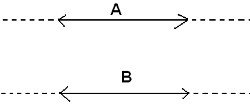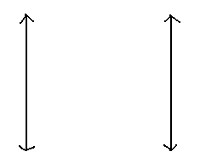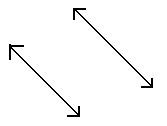Definition:Lines which don't meet each other or intersect each other, irrespective how much they are extended, are known as "Parallel Line"

Parallel Lines are also known as Non-intersecting lines.
In the above figure, you can see that Line A and B, even after being extended, don't meet each other at any point. Hence Line A and B are parallel to each other.
When two lines are parallel to each other, its denoted by sign "||"
So, we write, Line A || Line B
Below are some more figures of parallel lines.
Figure 1

Figure 2

Figure 3

|






